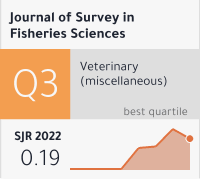The Effect of Crop Diversification on the Socio-Economic Conditions of Farmers- A Case of Rajasthan
Keywords:
.Abstract
The current research examining the impact of crop diversification was conducted in Himachal Pradesh, taking into account various factors such as the socio-economic conditions of farmers, changes in cultivation costs, income, and farmers' self-sufficiency. Both primary and secondary data were utilized for this study.
The findings revealed significant increases in vegetable cultivation areas, with a 232% increase in the rabi season and a 328% increase in the kharif season. Conversely, there were declines in the areas cultivated for paddy, wheat, maize, and barley, with decreases of 16.28%, 23.05%, 22.70%, and 76.89%, respectively. Following project implementation, the crop diversification index rose from 0.48 to 0.62.
Vegetable crop yields showed impressive performance, with increases ranging from 100% to 150% in both rabi and kharif seasons before and after project implementation. A significant proportion of respondents achieved selfsufficiency in vegetable (73.62%), milk (74.08%), and food grain (63.76%) production. Additionally, 77.06% of respondents reported increased annual income attributed to diversification.
Crop diversification demonstrates promising potential in enhancing yields, reducing cultivation costs, and ultimately increasing farmers' net income.
Agriculture has been the backbone of the Indian economy and it will continue to remain so for a long time. Agriculture is pivotal for socio-economic development of the country as it employs about 48 percent of total work force despite the fact that share of agriculture in India’s GDP has declined from 48.7 per cent in 1950 to around 13 per cent in 2016 (GOI 2016). The growth in agriculture no doubt has helped in achieving self- sufficiency in food security but with changing socio- economic scenario, rise in per capita income and demand for high-value products, farmers are required to diversify their cropping pattern from food grains to high value crops such as fruits and vegetables. In the post green revolution period, the quest of achieving food security and the policy measures like support price programme have resulted in over focus of food crops, mainly rice and wheat combination, leading to mono-cropping, depletion of resources and host of diseases.
In the meantime, the high-value segment of agriculture offers considerable opportunities to farmers for improvement in their livelihood as the food basket is undergoing a significant change (Birthal et al. 2007). The consumption of food items is moving away from food grains and changing towards horticultural products like fruits and vegetables, food items of animal origin like milk, eggs, meat, fish, etc. This shift in consumption pattern to some extent resulted in diversification towards high value food and change in income and taste and preferences of consumers (Mittal 2007, Reddy 2004, Reddy 2009).
Under the present dispensation of demand for high value crops, addressing the constraints faced by small holders is vital for their inclusion in the development process of Indian agriculture and rural India. Hence, there is a need to diversify the cropping pattern from the traditional cereal crops to high value crops such as fruits and vegetables. In addition to production, improving the access of small holders to market is vital in improving their income realization
The state of Rajasthan enjoys the congenial conditions for diversification towards vegetables, cash crops and other high value crops from the present situation of mono-cropping. Further, there is immense scope for harnessing potential for cultivation of off-season vegetables through crop diversification programmes in the state. In line with the development policies of the State, conditions prevailing in the low hill areas of the state and with focus on increasing agricultural income, crop diversification is deemed to relevant option to be include in state agriculture policy by involving the various stakeholders.
One of such joint effort is the Rajasthan Crop Diversification Promotion Project, being implemented by Government of Rajasthan in collaboration with the Japan International Cooperation Agency- Official Development Assistance (JICAODA) during 2011-2021 (Anonymous 2016). The project aims at promoting crop diversification in the target area of five districts of Rajasthan namely, Bikaner through rehabilitation and development of infrastructure such as irrigation facilities, farm access roads, capacity building programme for farmers on vegetable cultivation, improving yield of food grains, post-harvest management, strengthening of extension services of Department of Agriculture and allied sectors. As against this backdrop, an attempt has been made in the present study to analyze the Impact of Crop Diversification on Farm income due to intervention in the form of project funded by JICA.









